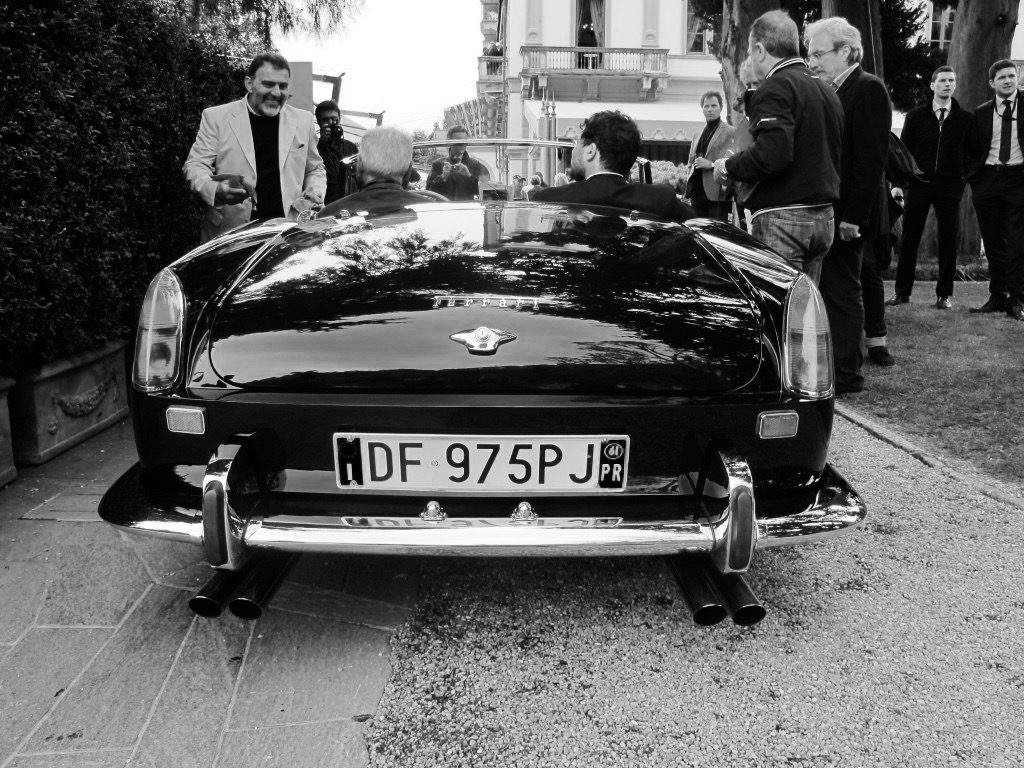I will admit something embarrassing. Up until recently I would confuse spotting a Ferrari 250 California SWB and a LWB.
How could this be possible?
One of the most collectible of all Ferrari and I could not figure out the difference between them. I remember a friend saying to me a few years ago, ‘you can spot the difference between both models by looking at the vents on the side’. No matter how hard I tried I would look at the vents and they seemed the same to me. Unless I could have both models side by side, I could not figure out the differences between them. Yes, the LWB was longer (LWB stands for long wheel base and thus longer chassis) but there must be another easier way to spot the difference.
Thankfully, there is.
This year I went to Cavallino for the very first time and met a young man called Steve (the.mancino on Instagram) and we started to look at cars together when we came across several 250 California Spiders. I admitted to him that I would confuse both models all the time. Thankfully ‘the mancino’ had a few tricks for me to remember the difference of the legendary two cars.
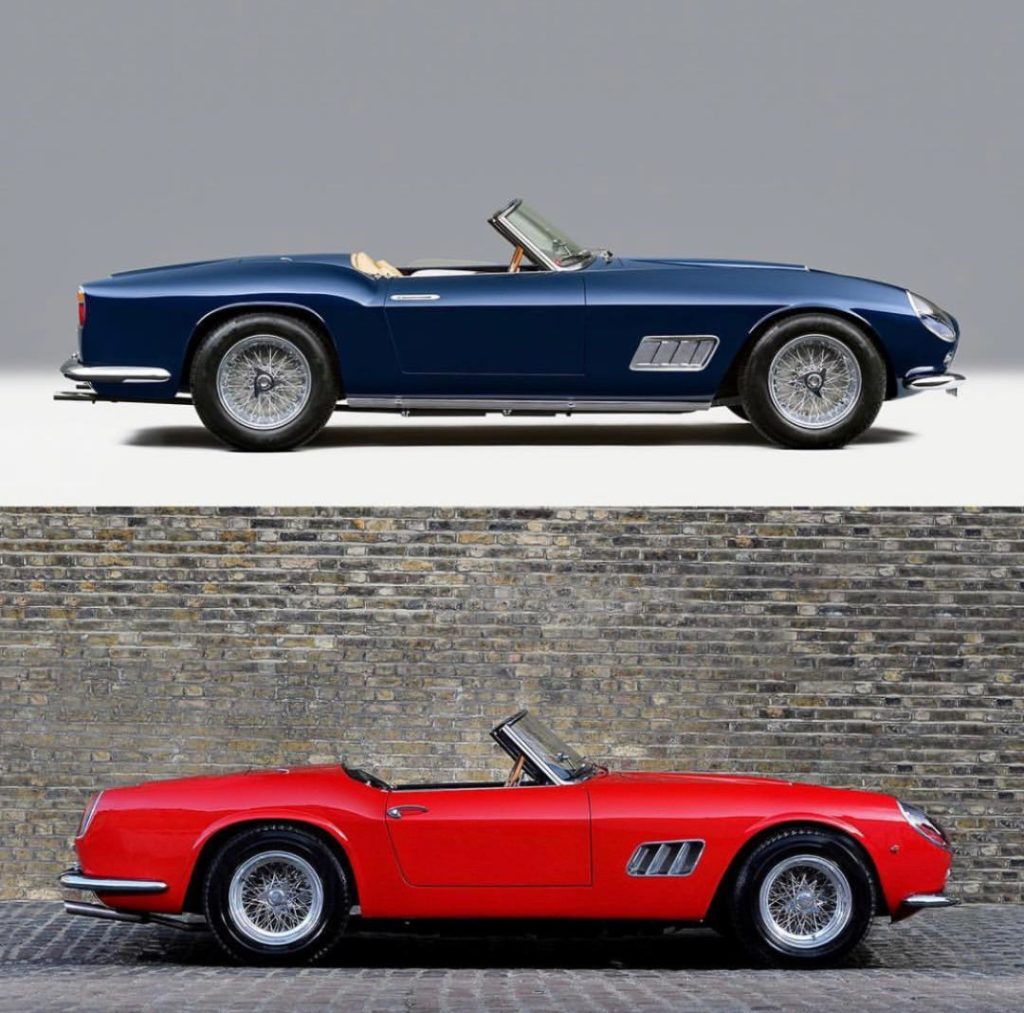
(Credit: Tim Scott). The blue car above is a LWB versus the red below which is a SWB. The differences are quite visible from the side profile.
First a short intro: The 250 California Spyder is a relatively rare car. Built between 1957 and 1963; little more than 100 were made.
First came the LWB version from 1957-1960, then followed the more aggressive and sportier SWB version from 1960-1963 (with 40 more hp for 280hp) of which 55 were made. Only very few have racing history and were actually raced – the 250 California was more of a GT car than race car – even in SWB version.
In terms of drivability James Cottingham DK Engineering says this: the LWB has the roomier cockpit which is useful for a tall driver but undoubtedly the SWB has a more dynamic and compliant feeling, is a more capable car and has superior handling.
Here are 6 ways to spot the difference between the LWB and SWB California Spyder.
(For less interested in details I show some incredible pictures of the California Spyder in the end of my report). Main picture shows a 250 California Spyder LWB.
Nr 1: Headlights
Very often (but not all the time) the LWB cars have no chrome around the plexiglass headlights.
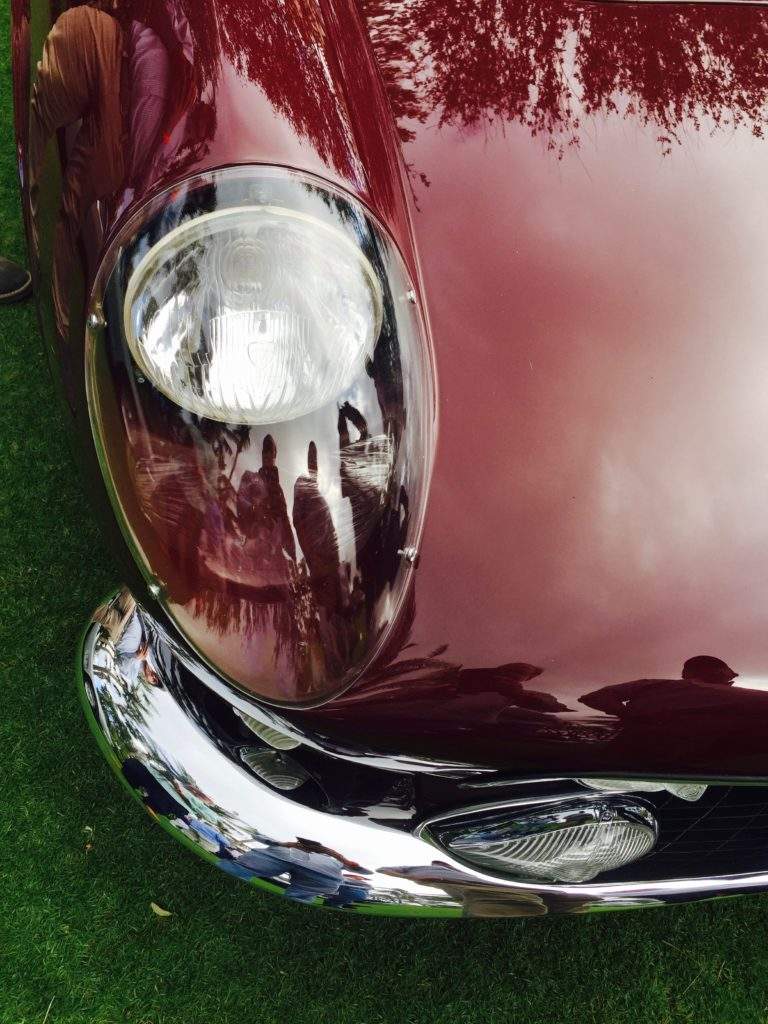
The SWB version has chrome around them. See picture below.
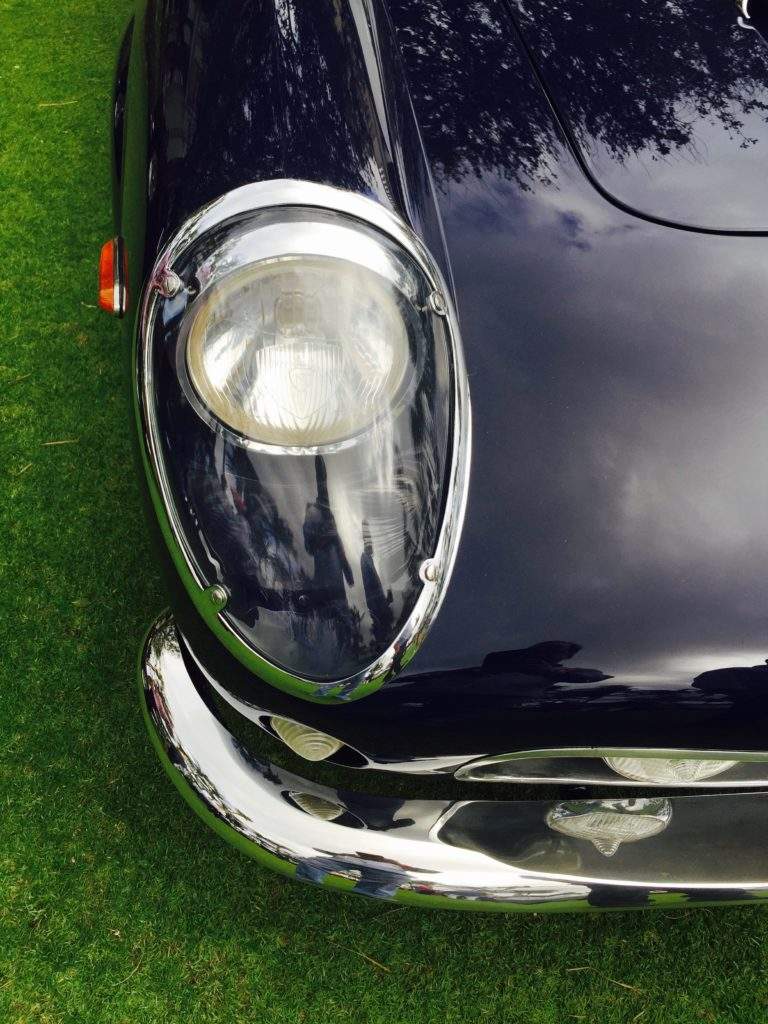
Identifying a SWB from a LWB becomes a problem when both are open headlight cars.
Thankfully there is another, perhaps even better, method to tell them apart, looking at the rear or tail lights.
Nr 2: Tail-lights
This method is arguably the most reliable method to tell both cars apart.
For me the easiest way to tell both cars apart are looking at the tail-lights. And it is here where I much prefer the look of a LWB car than SWB. Below first the LWB car that has fine lights with chrome going across the middle, dividing the two lights.
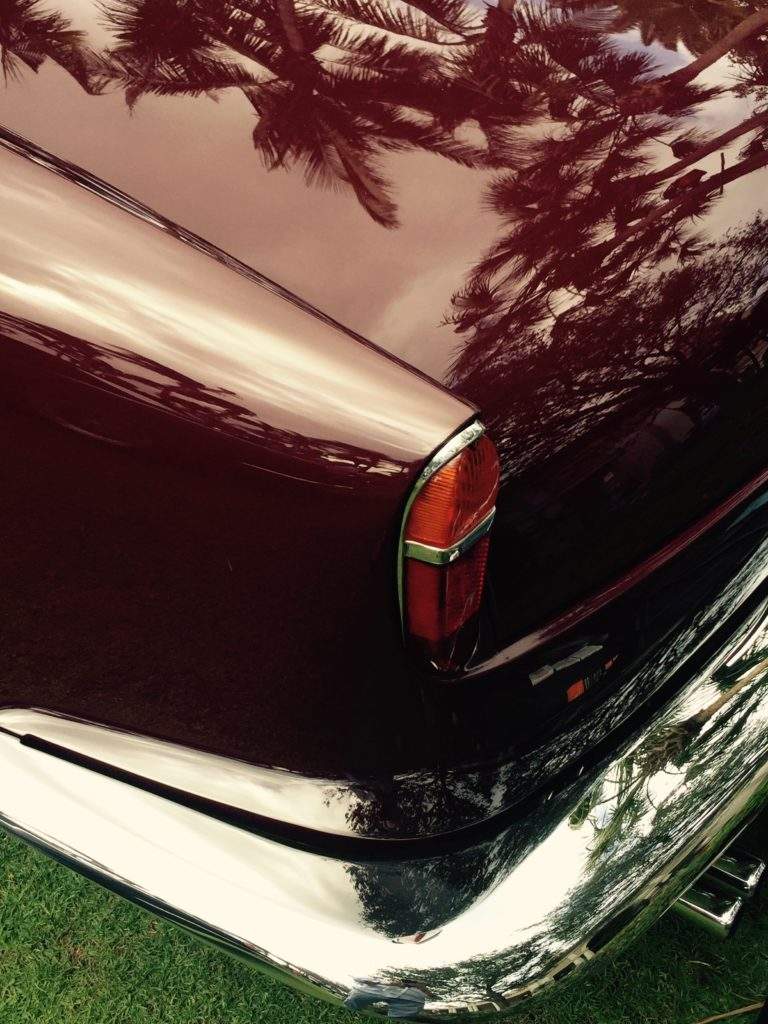
Look at the difference of a SWB car. No chrome across the middle and the tail-lights are more slanted at an angle.
These lights have always reminded me of an MG car. I personally don’t like them.
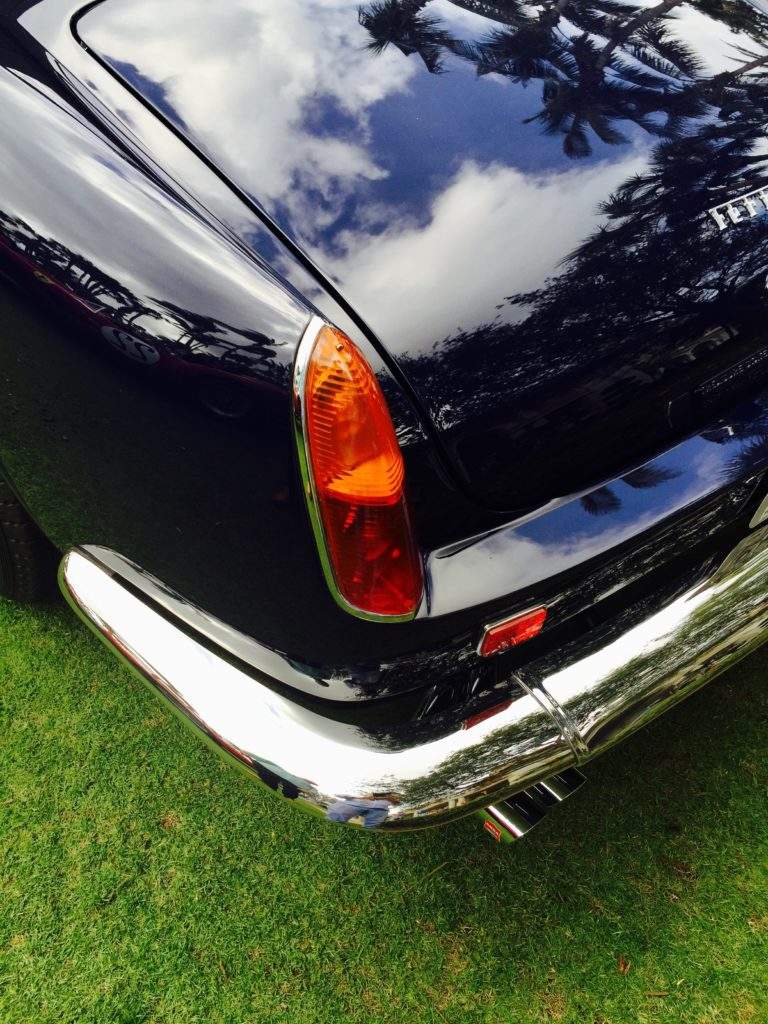
The picture below shows a pair of SWB – clearly identifiable from the rear lights.
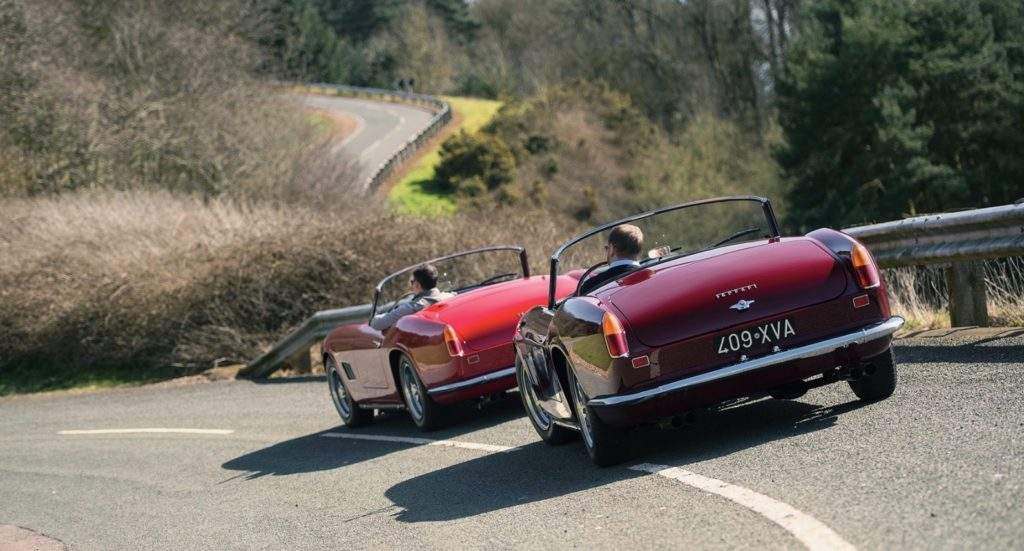
(Credit: DK Engineering).
Nr 3: Door Handle
Another difference can be found in the door handle. The LWB has the more elegant door handle, pressing the round button makes the handle ‘pop’ out.

Compare the car to the SWB which has a more ‘modern looking door handle’.
This makes perfect sense given that the SWB is a more modern car and came after the LWB version.
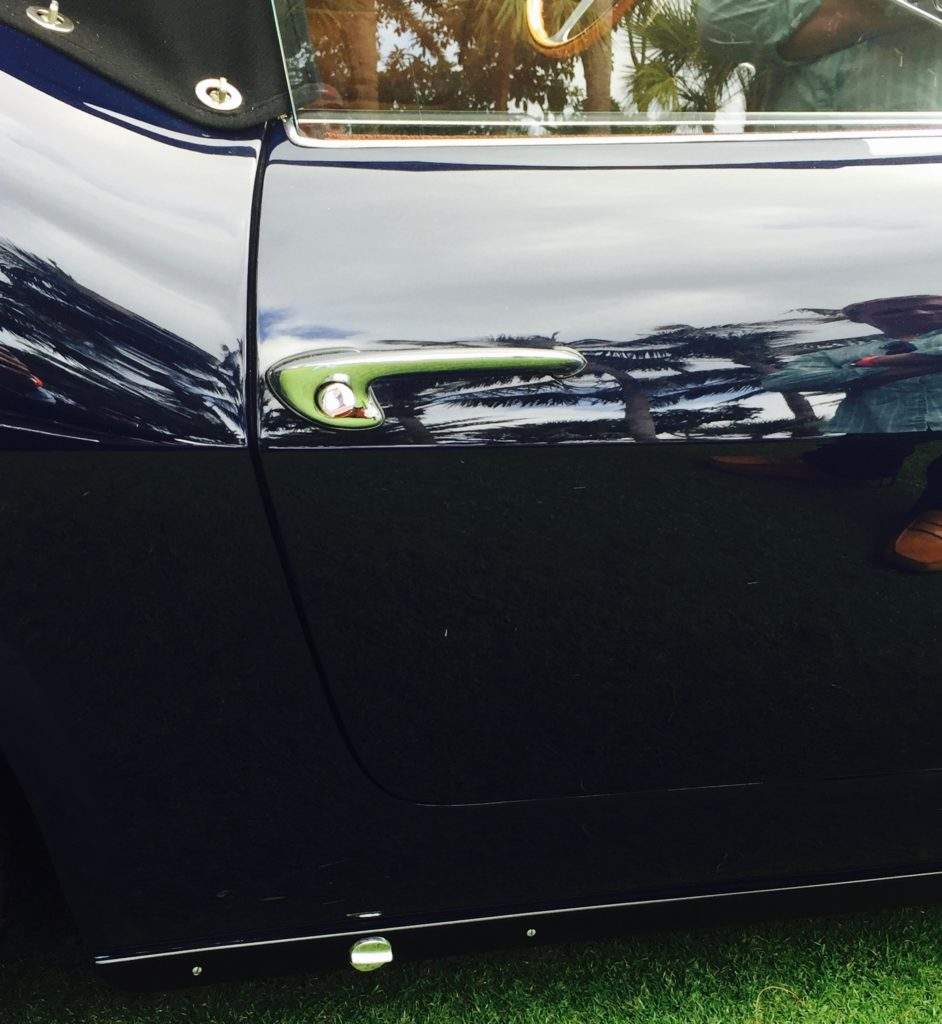
Nr 4: The soft-top and screw positioning
This might just be the most subtle of differences. The positioning of the screws.
The LWB has the screws that keep the soft-top in place closer together and near the door. Not on the hip of the car where the arch begins,

Now look at the difference of the SWB version. The screws are placed further apart and are on the arch of the car where it is curved.
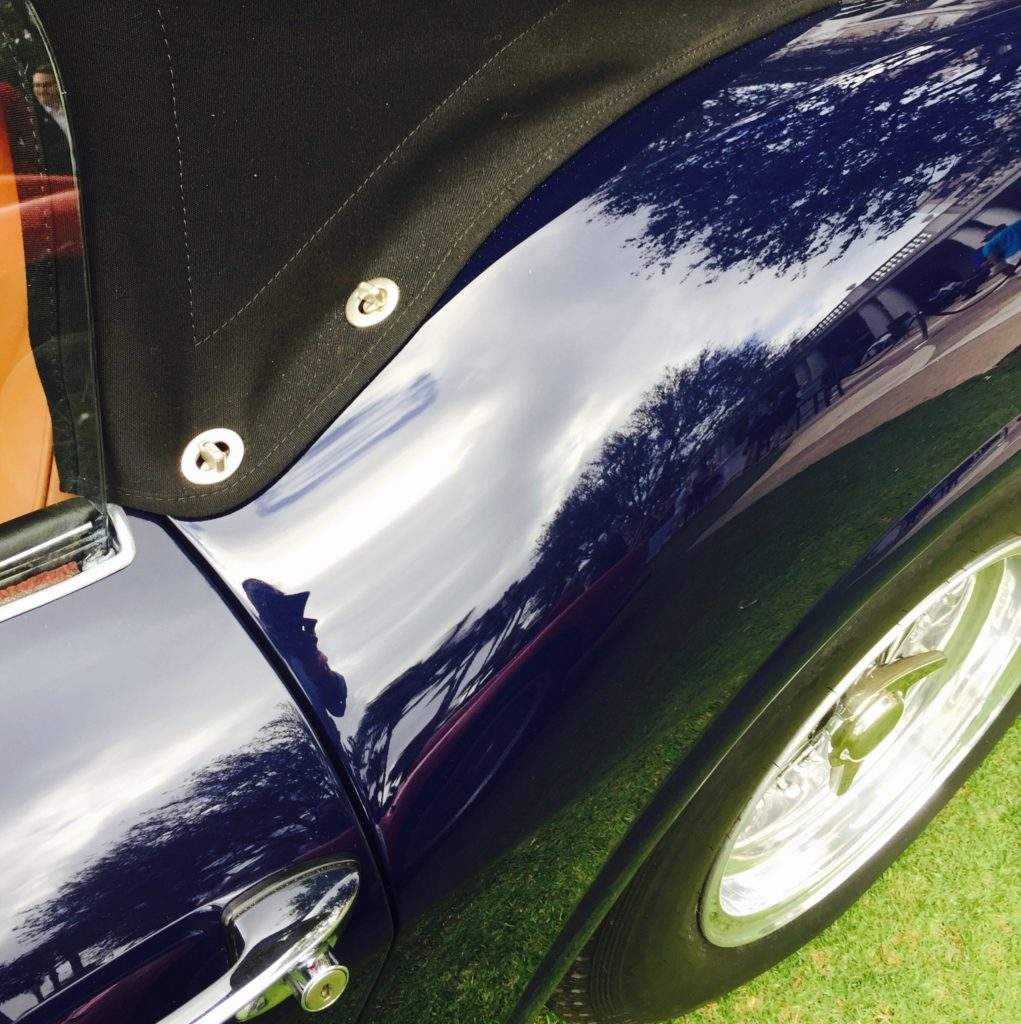
Nr 5: The side Air vents
This is another relatively easy way to tell both cars apart.
The LWB has four gaps in the side air vents (the SWB has only three). See a LWB version below. Both cars in the picture below are LWB cars.
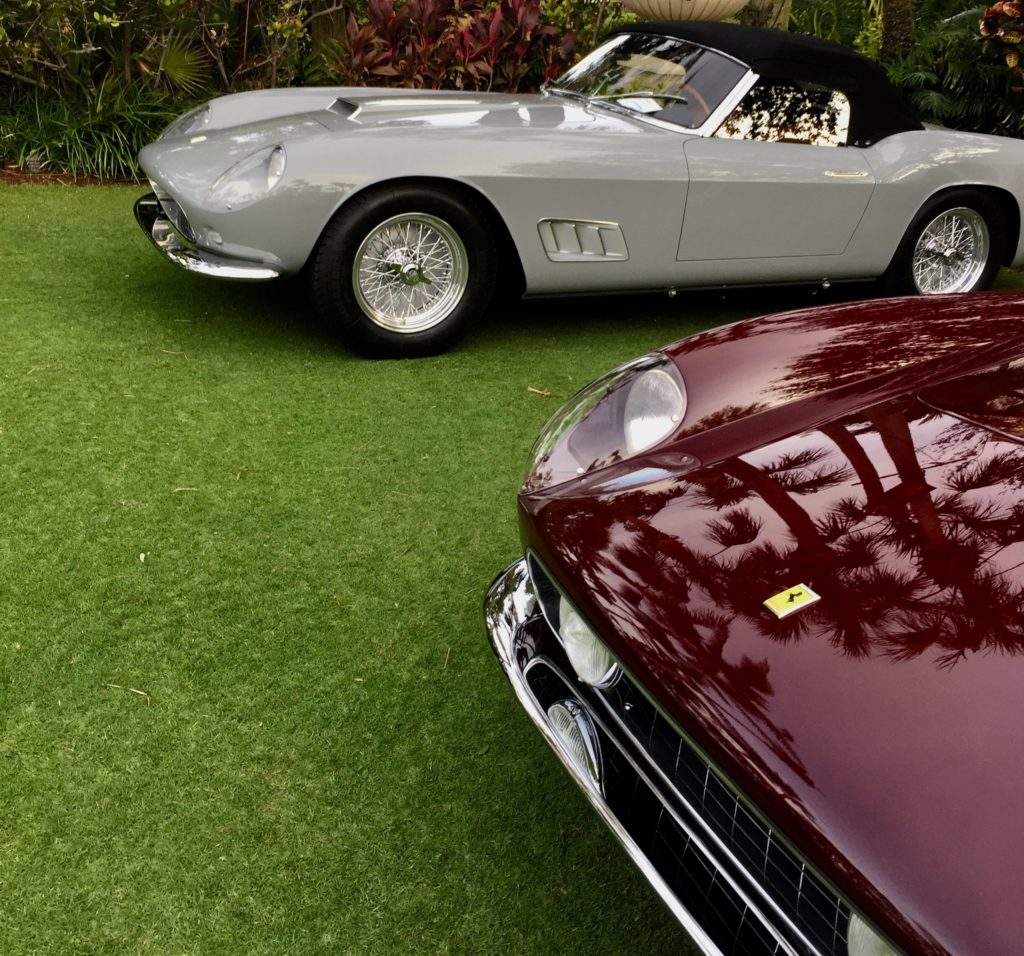
Look at the difference of a SWB car below. Notice the three gaps in the side vents. Three gaps means it is a SWB.
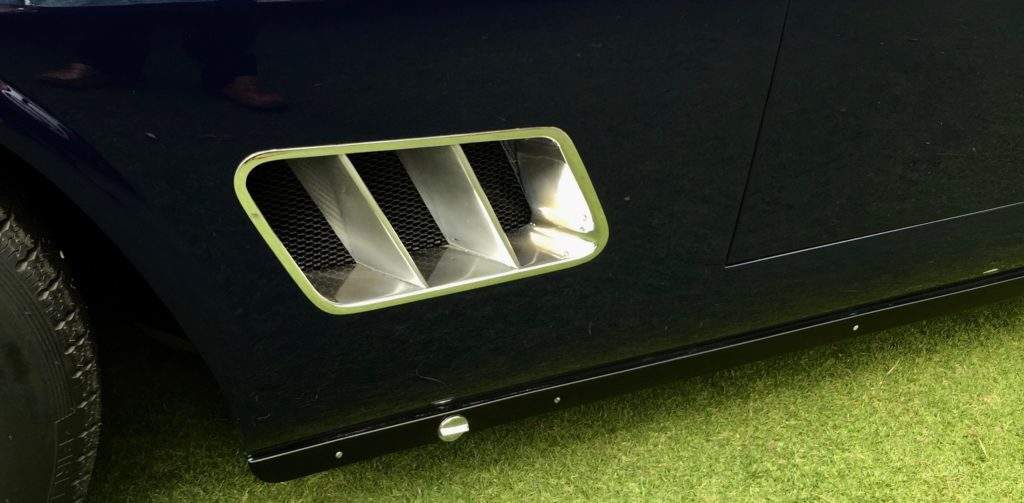
Another angle of the side vents of two SWB cars together.
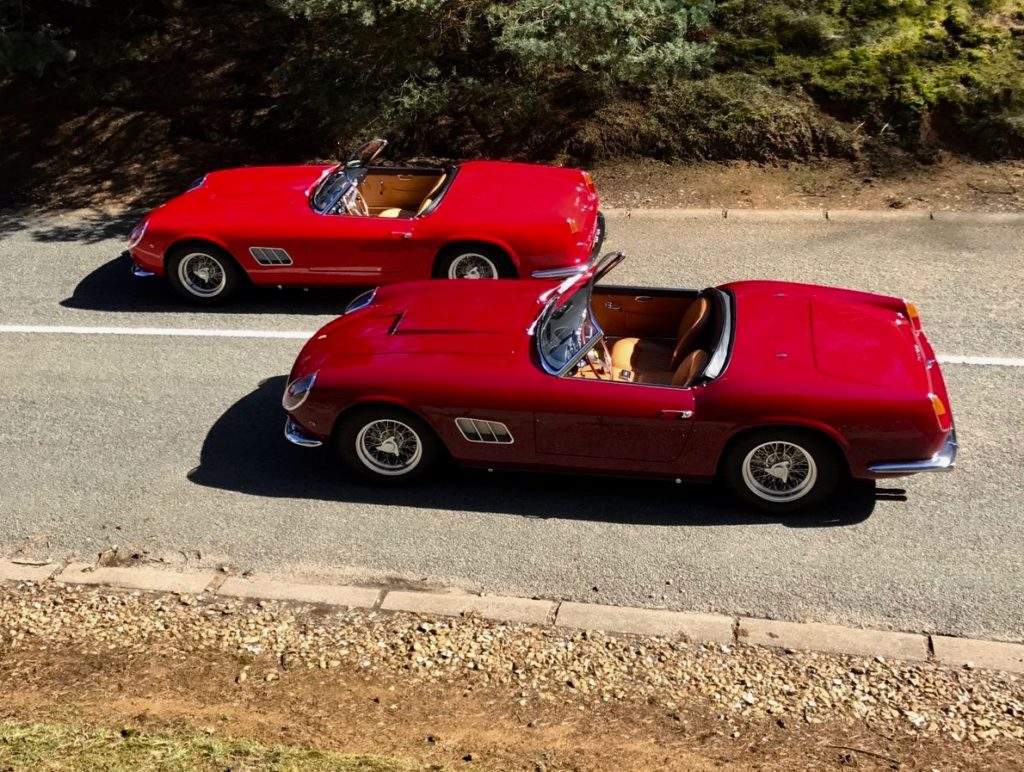
Nr 6: The air vent on the bonnet
The last method is also a relatively easy way to spot the differences between both cars. Look at the LWB car below. The air intake is not ‘sunk’ into the bonnet.

Now compare it to a SWB and see how the air vent has a recess and the lines going from the air vent to the bonnet. Big difference.
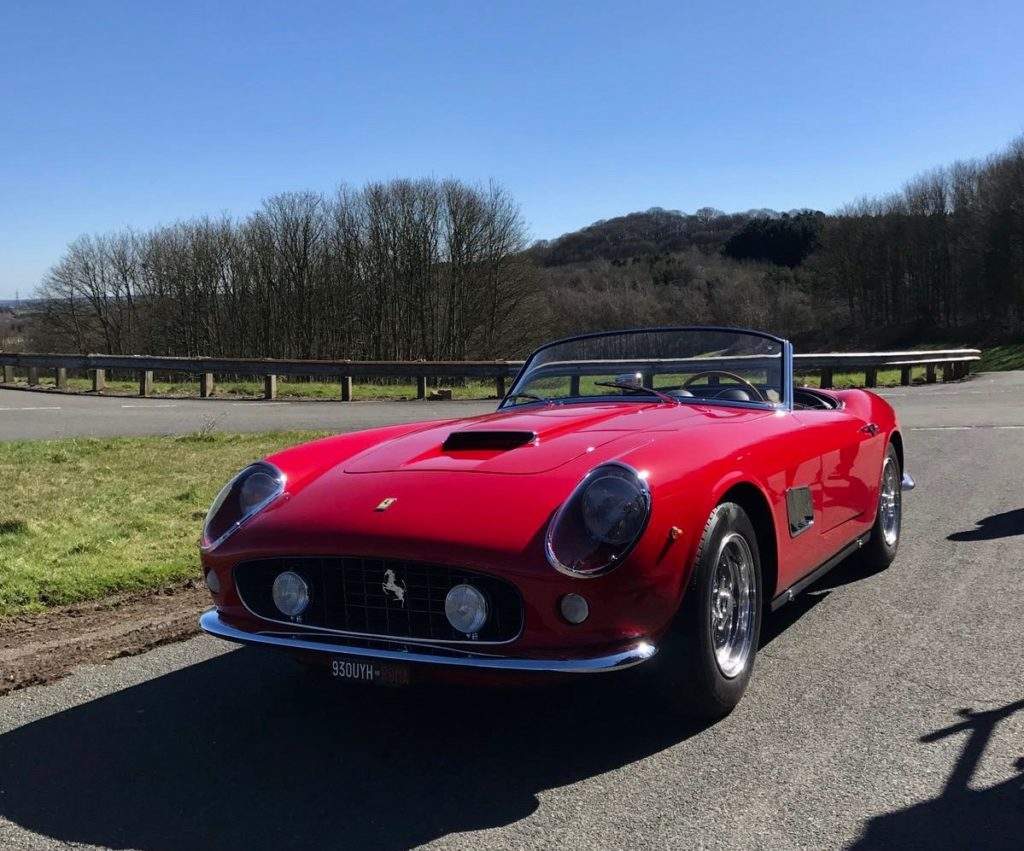
(Credit: DK Engineering UK).
The next time I am at a concours, I will quite easily be able to identify both cars using what I have learned at Cavallino and thanks to my friend the mancino (Steve Carlson).
Allow me to show you a few more California Spyders that I have taken over the past few years.
Below a rare prototype version seen at Villa d’este last year. Notice the two screw hinges for the softtop placed together – which suggests – this is a LWB car. If you look at the instrument panel you will realise that it is not common to a California Spyder.

The same car but from another angle. The rear lights also confirm that this car is a LWB version.
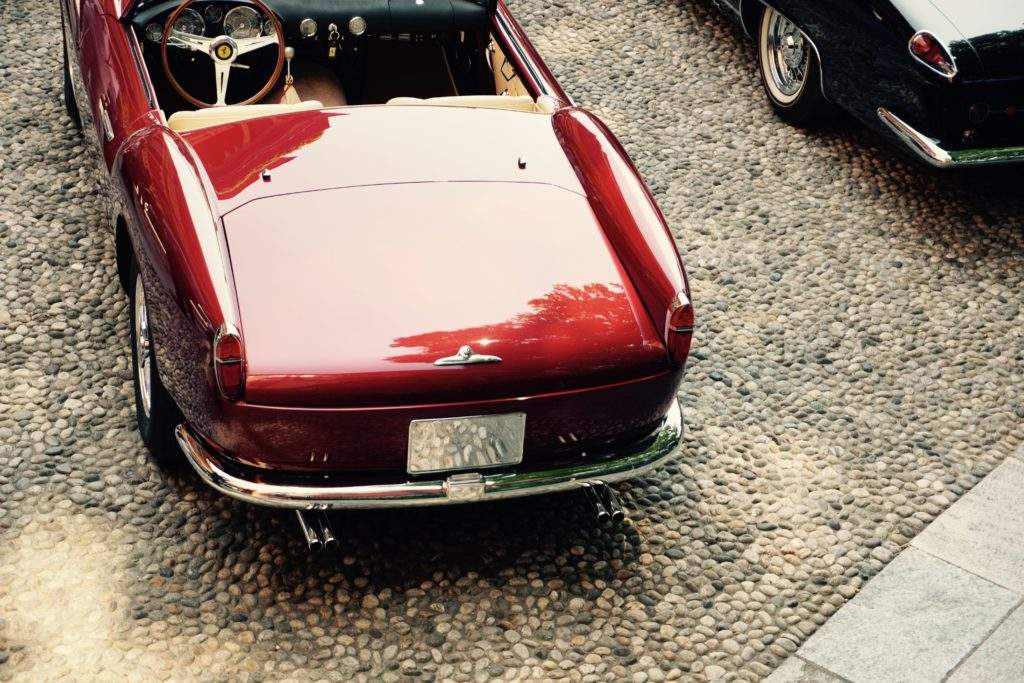
Allow me to show the car in full. What a dream it was.
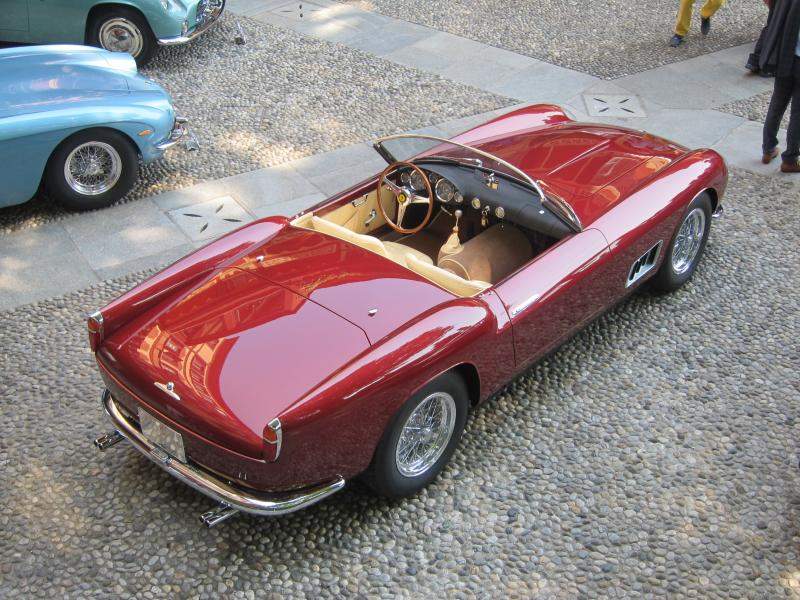
This dream California Spyder was seen a few years ago at Villa d’este. The front lights without chrome around the plexiglass suggest LWB version.
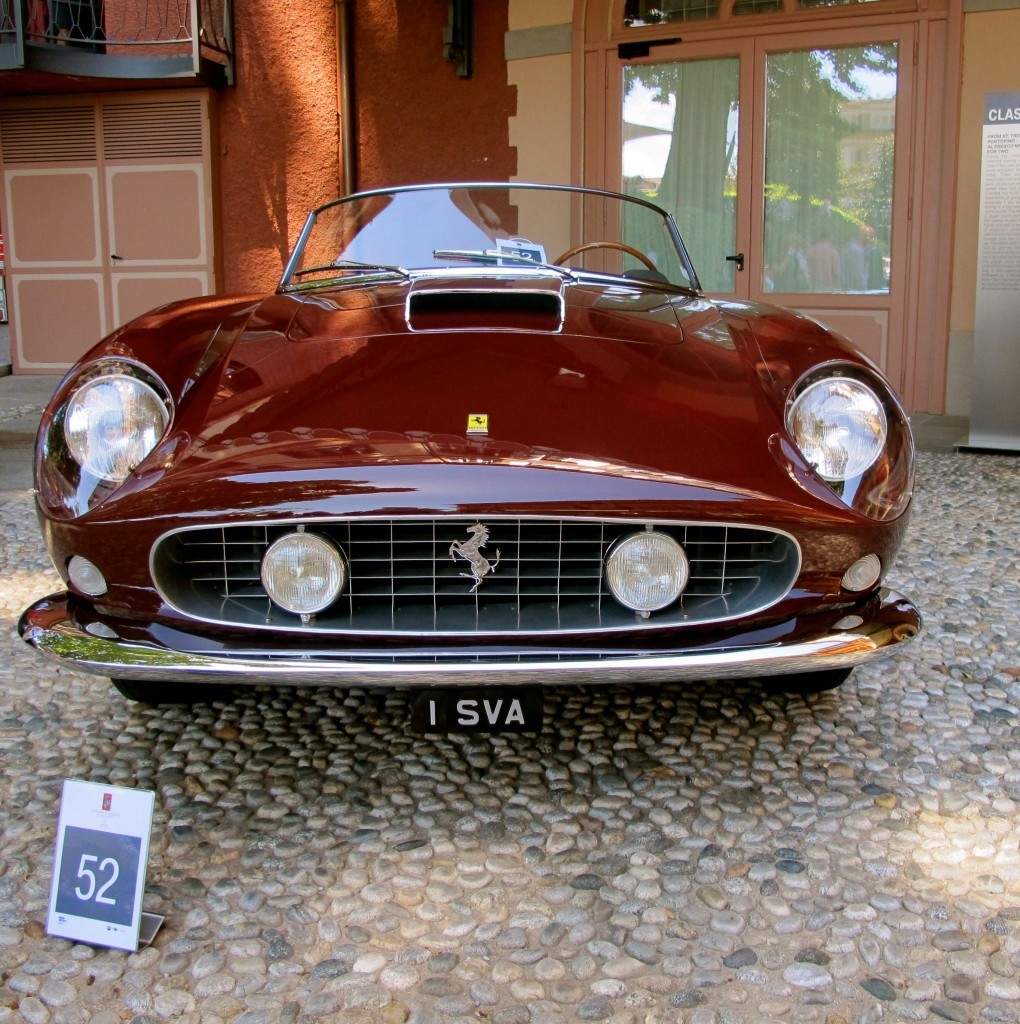
Here the car from the back. Indeed the back lights (the chrome diving the rear lights in two parts) provide another clue that this is indeed a LWB version.
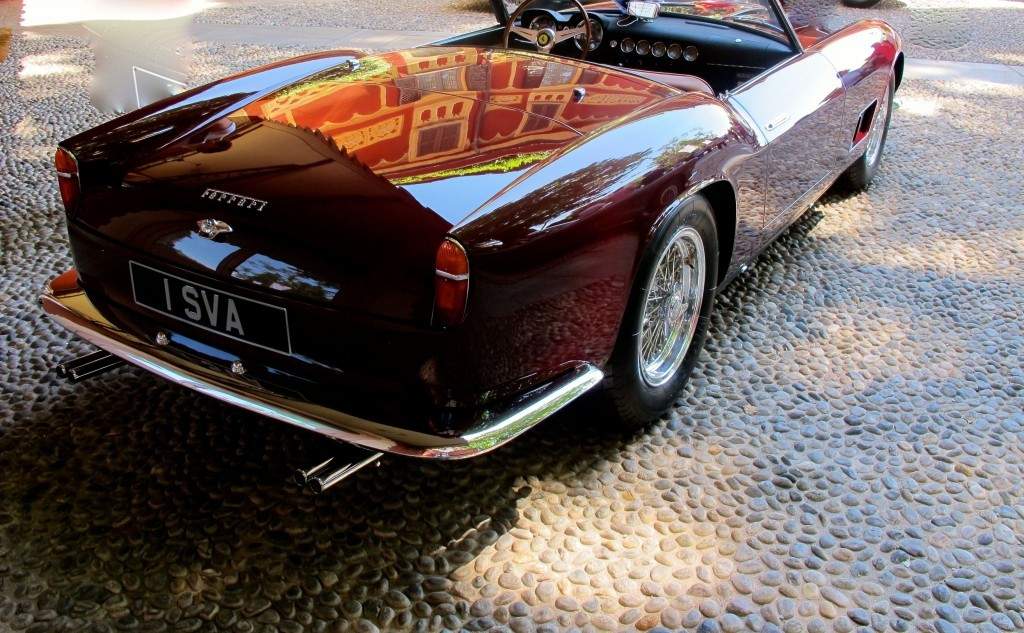
The picture below remains one of my all time favourite because of the cool car cover.
Count the gaps in the side vent and you know right away – this is a LWB.
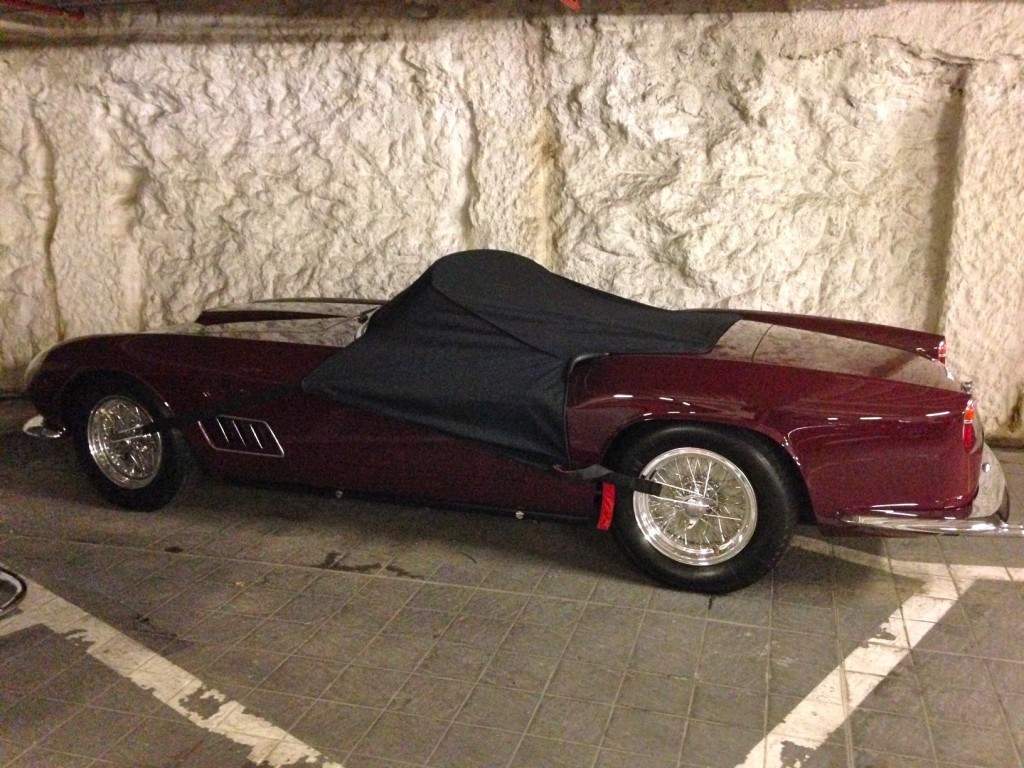
Another LWB seen over the years. How can I tell? Look at the door handle and the screw fastenings for the soft -top placed before the hip.
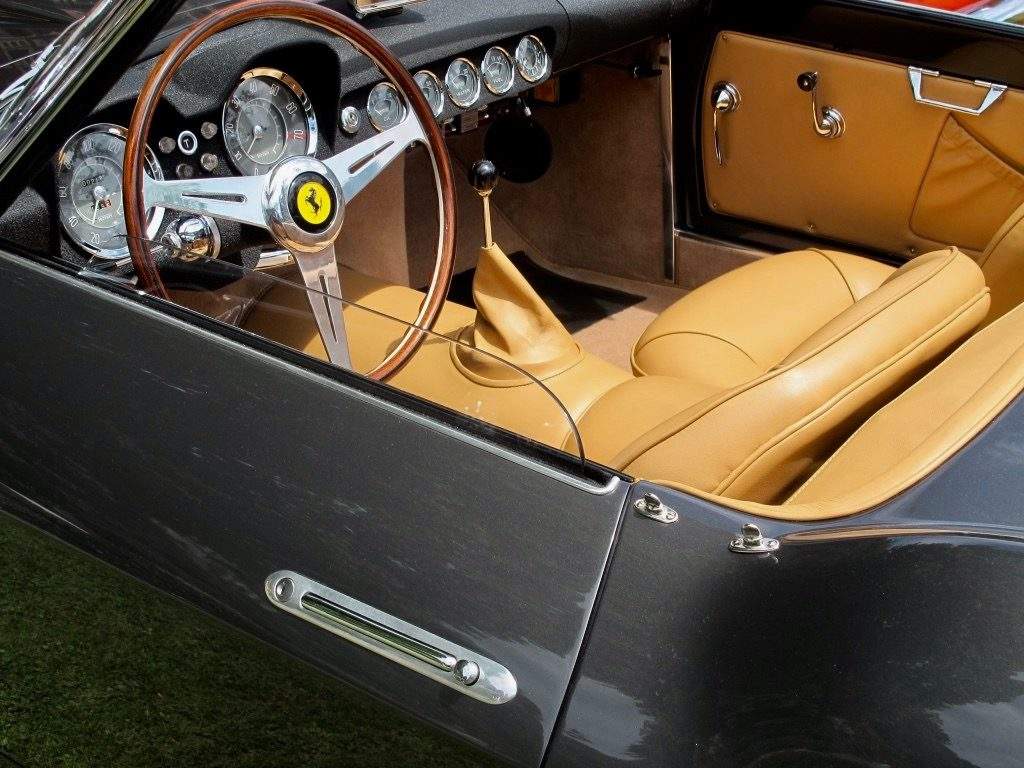
Below a beautiful open headlight car. Judging from the door handles sticking out, I would bet this is SWB version with the more ‘modern’ door handles.
Also the bonnet with the recessed air vent indicates that this indeed must be a SWB.
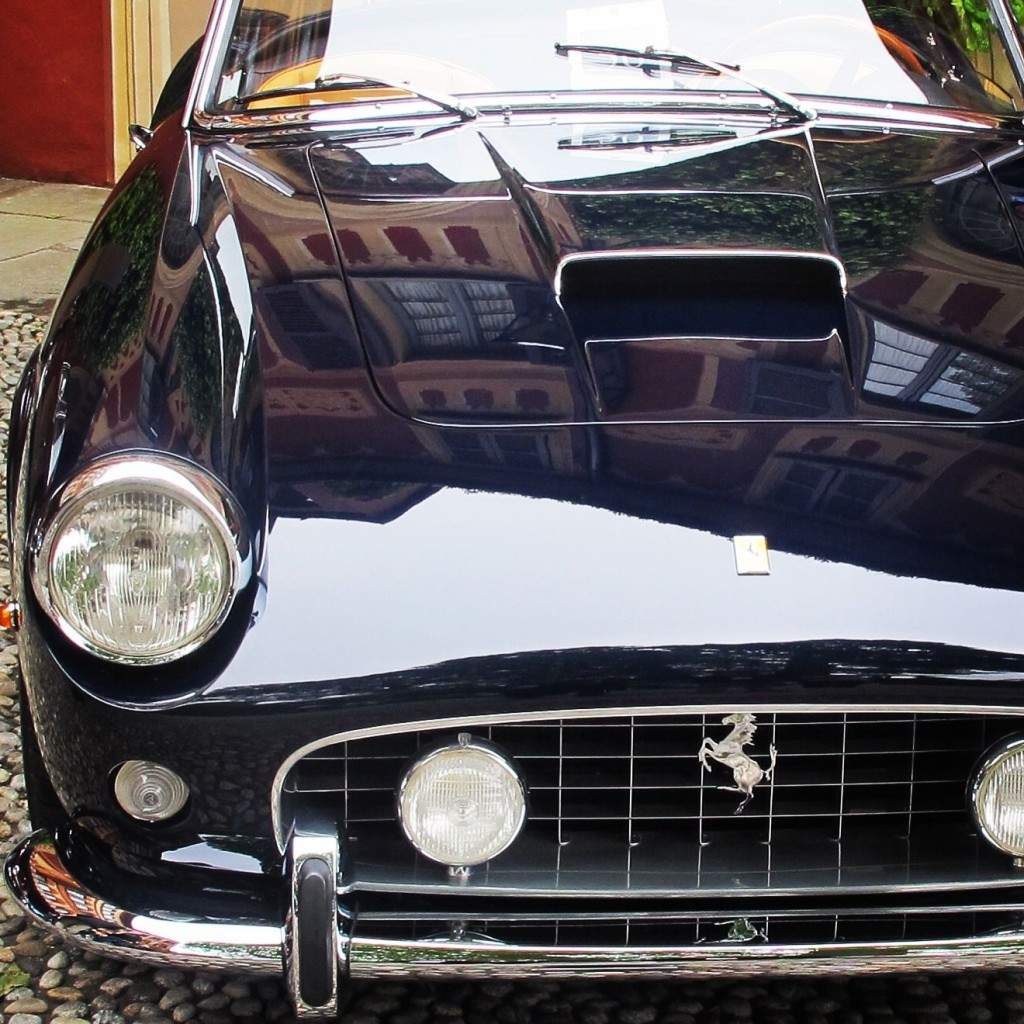
Another beautiful SWB (notice lack of chrome diving the rear lights suggesting a SWB) driving towards the judges at Concorso Villa d’Este a few years ago.
